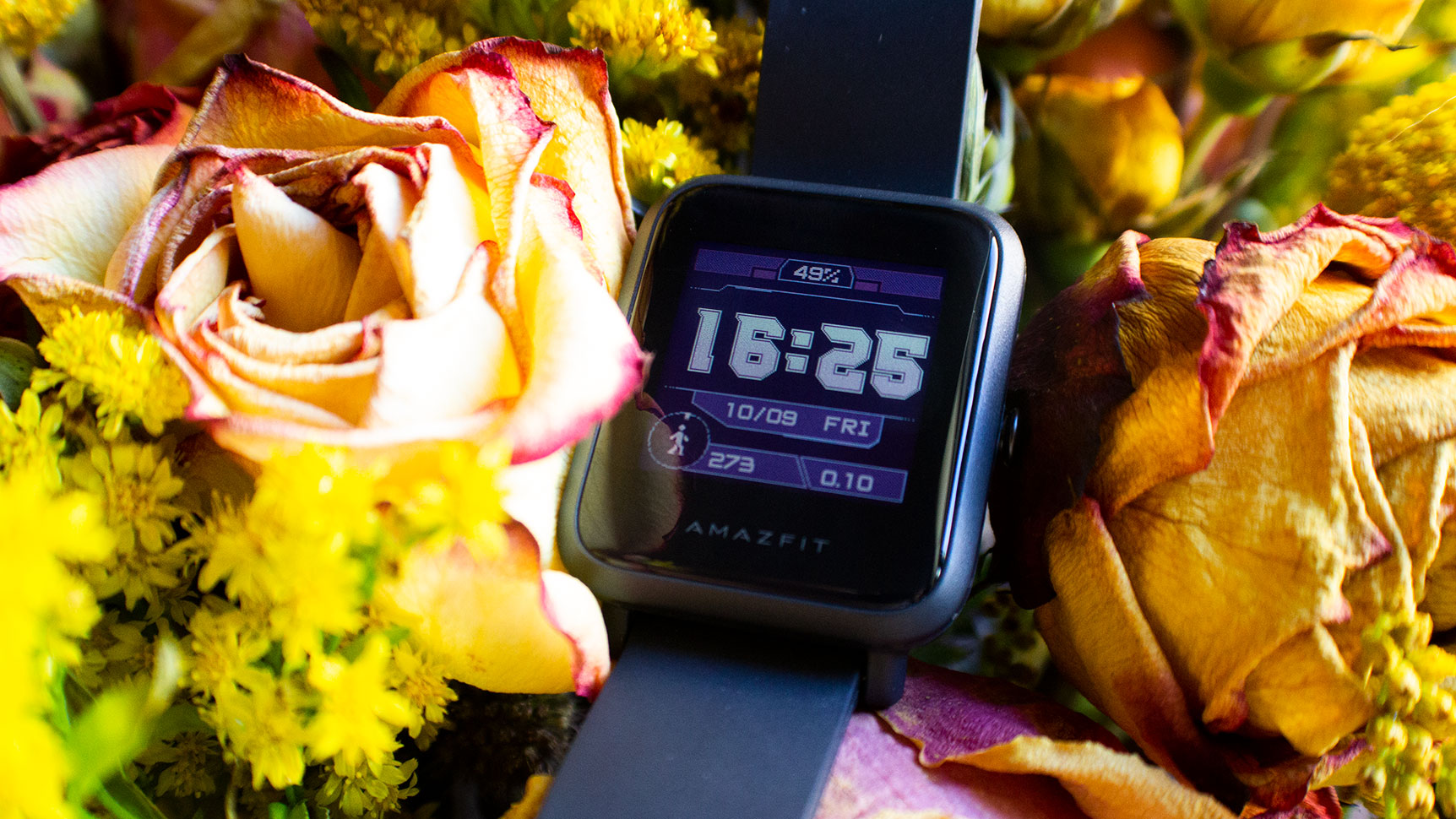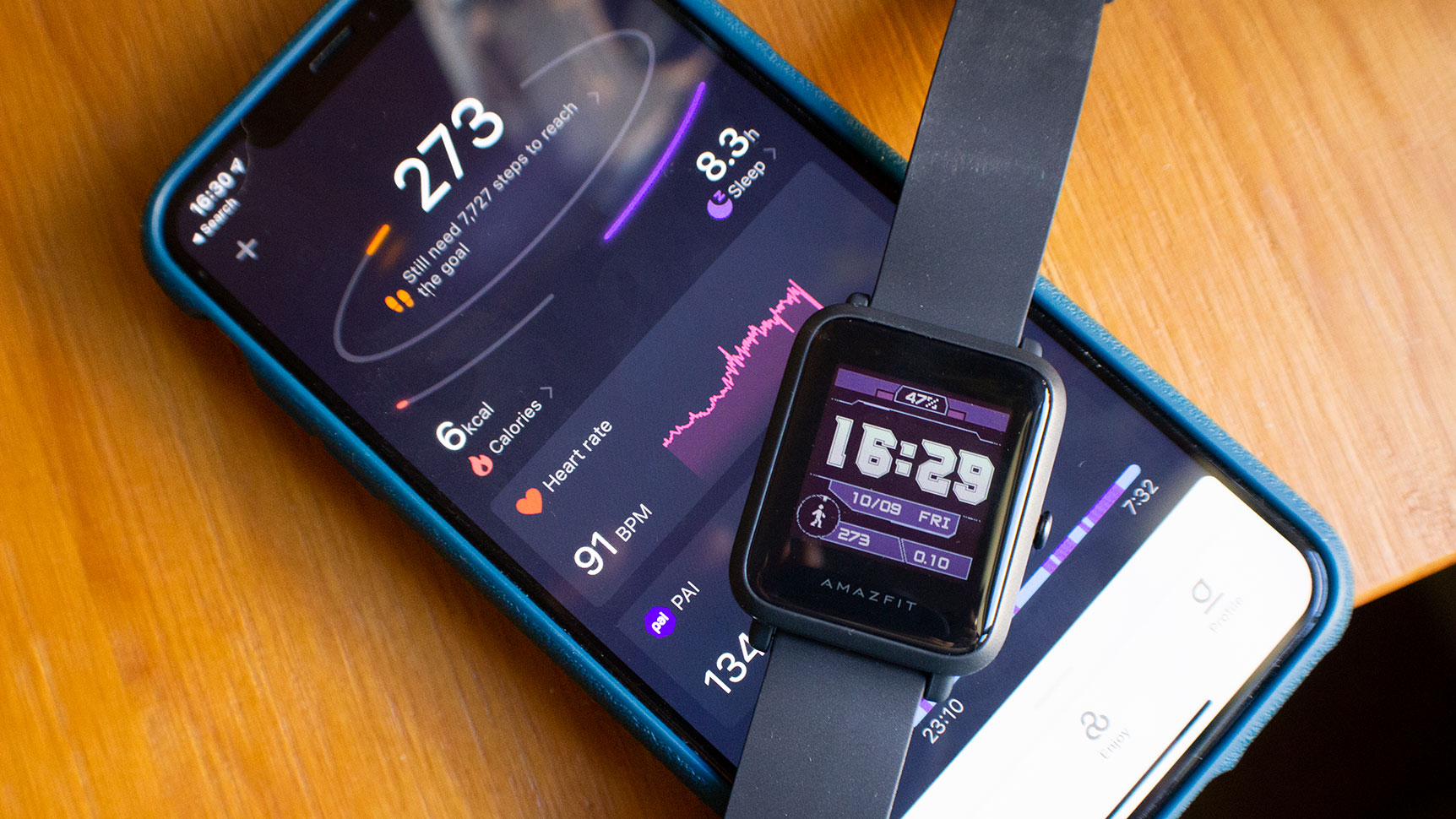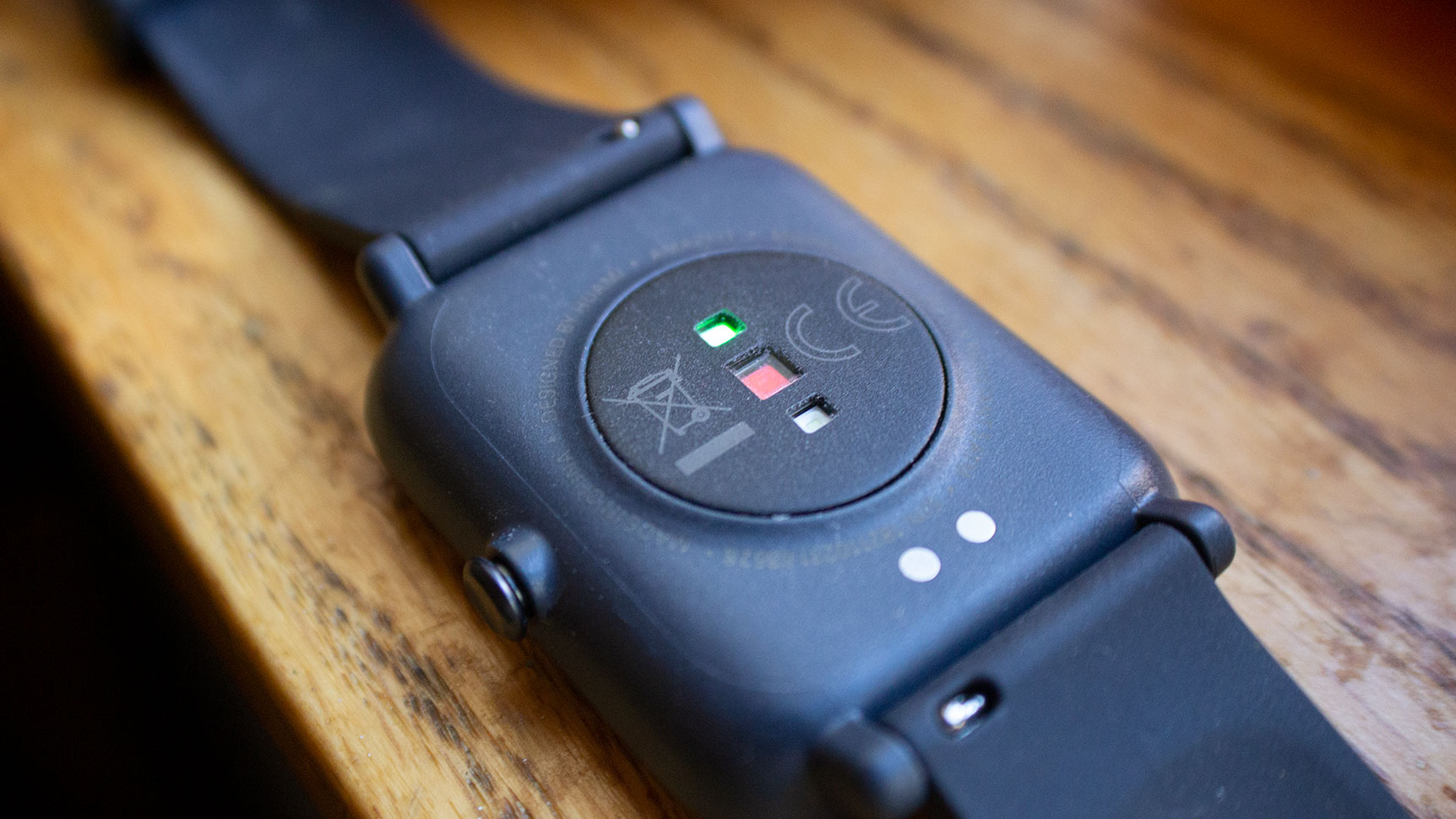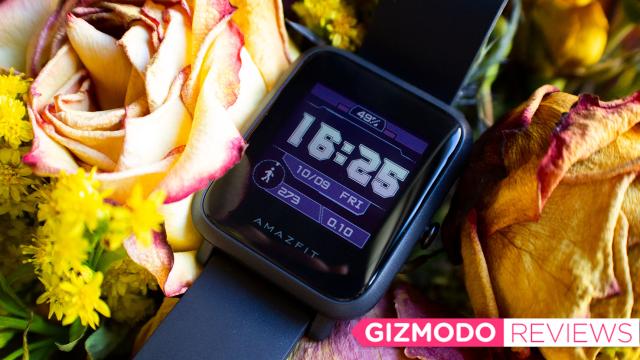The old adage, “You get what you pay for,” is usually true, and when it comes to gadgets, doubly so. But every once in a while you find a product that punches above its price tag. The Amazfit Bip S is one of those devices.
To be clear, the Bip S is not ever, ever going to compete with a premium flagship smartwatch like the Apple Watch Series 6, Samsung Galaxy Watch 3, or the Fitbit Sense. Though smartwatches have become much more affordable in the last couple of years, we’re not quite at the point where you can get premium specs on the cheap. However, the Bip S offers some features you truly wouldn’t expect on a sub-$150 smartwatch. It has built-in GPS for one. It also has an always-on display, continuous heart rate-monitoring, and with typical use, 15 days of battery life. You get sleep-tracking (with sleep stages!), your typical push notifications, a colour transflective touch display, 10 sports modes, editable watch faces, 5 ATM of water resistance, and music control too. That’s…pretty freaking incredible for the price.
Let me put it into context: Fitbit just put built-in GPS onto the Charge 4, a fitness tracker that costs more than double the Bip S at $220. The last time I reviewed a $110 smartwatch, it was the Withings Move. I was underwhelmed, to put it nicely. It only had the most basic fitness metrics, relied on my phone for GPS, and while it tracked sleep there were no notifications.

Amazfit Bip S
What is it?
The cheapest smartwatch with built-in GPS I've ever tested
Price
$110
Like
Very accurate GPS fitness-tracking; 15-day battery life (up to 40 days if you tweak settings); continuous heart rate-monitoring; sleep tracking
No like
Tired design and cheap materials; chonky bezels; some quirks with the app
On paper, I had a feeling the Amazfit Bip S sounded too good to be true. Huami, Amazfit’s parent company, isn’t exactly a household name in the U.S., even if they have a crap-ton of budget wearables all over Amazon. (They’re also the company that partnered with Timex for its affordable smartwatches.) But enough of Gizmodo’s loyal smartwatch readers had yelled in the comments about Amazfit smartwatches that I decided it was time to try one out for myself. After all, there had to be a catch right?
There kind of was — mostly in terms of style and design. This is not a beautiful smartwatch. At a glance, it looks like an Apple Watch clone, but not in a high-end way like the Oppo Watch. The polycarbonate body isn’t anything to gawp over, but it is lightweight at just 31 grams. It just feels kinda chintzy in your hand — partly because of the materials, and partly because the silicone strap and plastic buckle don’t feel particularly sturdy. But again, it is only $110, and in a week of wear, it hasn’t fallen apart, even though I’m pretty hard on my watches.
Likewise, the 1.28-inch transflective display is not going to win awards or compliments. There’s a huge bezel on all sides of the display. Swiping through screens isn’t the snappiest, but it’s not so slow you’d get frustrated. I wouldn’t call the 176 x 176 screen resolution terrible either; it’s actually sort of reminiscent of the old Pebbles back in the day. And if you like exercising outdoors, transflective screens are nice because they’re visible in direct sunlight.
The corresponding Zepp app (formerly called Amazfit) is also decent. Is it as advanced or polished as say, Samsung Health, Apple’s Health or Fitness apps, or Fitbit’s? No. But it does deliver a lot of the same functionality, even if defaults to the metric system (you can change that), and there are occasionally awkwardly translated English phrases. Steps, calories burned, sleep, heart rate, and sleep score are clearly displayed on the home screen.
Huami also partnered with PAI Health (formerly Mio, in ye olden days of wearables), so you can also view your PAI or Personal Activity Intelligence score. If you never used a Mio tracker back in the day, I’d say it’s something akin to Fitbit’s newly introduced Active Zone Minutes. You get a certain number of PAI depending on your daily activity, and the goal is to maintain at least 100 PAI over any given 7-day period. The amount of PAI you’re rewarded for a given activity is based on your demographic data, so supposedly it is personalised for your actual physiology. I don’t know how much I buy that, but in any case, it’s good to have a metric other than steps to gauge whether you’re getting a good amount of activity in.
These are the worst things I can say about the Bip S, and for the price, these are acceptable tradeoffs.

Where the Bip S excels is fitness-tracking. I know, I was shocked. A 5 km run logged by my running app was recorded as 5 km on the Bip S and 5 km on the Apple Watch SE. Another 5 km run on my iPhone was logged as 2.54 by the Bip S and 5 km by the Watch SE. That accuracy extended to GPS walks as well. A 2 km watch recorded by my iPhone was logged as 2 km by both the Watch SE and Bip S. My run breakdowns were also above average.
On top of standard metrics like average pace and heart rate, you also get cadence, stride, GPS route, and heat maps. You also get graphs of your pace and heart rate, splits, and time spent in different heart rate zones. Is it going to beat Polar or Garmin? No. But you’re getting almost everything from a workout breakdown that Fitbit and Apple would give you.
Previously when using both the Timex Ironman GPS R300 and Metropolitan R smartwatches, which use the same GPS tech as the Bip S, I had a little latency with the watches finding GPS signal in my neighbourhood. I found the Bip S had a much easier time finding GPS overall.
For sleep-tracking, the Bip S is good at giving you an overall picture of how well you slept. It was pretty spot on with my Oura Ring for sleep duration, and how much time I spent in deep and light sleep. The Zepp app is not quite as granular as Oura’s app, but it does let you log factors like drinking, reading, and exercise that may impact your sleep quality — as well as your mood when you wake up. The one thing I felt it struggled with was figuring out when I was rudely awakened by my arsehole cat during the night. It never logged me as waking up in the middle of the night, even though I most definitely did get out of bed to appease my demonic furball.

The Bip S was also reliable at push notifications. You have to turn them on manually in the app itself, and for me, only Zepp, WhatsApp, Facebook Messenger, KakaoTalk, Facebook, Instagram, Twitter, YouTube, and Calendar were natively supported. However, you can opt to turn on Bluetooth notifications for every other app — it’ll just have a generic app icon in the corner of the notification instead of the actual logo. Again, not a big deal. Music control was also easy, though here there was a teeny bit of latency — maybe 2-3 seconds. Otherwise, it worked fine.
Battery life was also tremendous. After a week of nonstop continuous wear with about two hours of GPS workouts, I still have 49% battery. That’s on track for the 15 days of typical usage. Technically, if you tweak settings to be less power-intensive, you can purportedly get up to 40 days. Though realistically, the 15-day number is probably closer to the mark.

If you’re looking for more of a conventional smartwatch experience with cellular calling, NFC payments, and third-party apps, the Bip S isn’t going to do it for you. But, if you’re looking for something simple and accurate that gets you your notifications, I actually think you might want to consider the Bip S over trackers like the Fitbit Inspire 2 or the Fitbit Charge 4. For starters, you’re going to get a larger, more readable display for notifications. You’ll also get longer battery life, a wider selection of watch faces, and compared to the Inspire 2, you also get built-in GPS. You give up on things like SpO2 tracking and Fitbit’s social community. However, blood oxygen-monitoring is still a pretty nascent feature, and if you don’t get hyped on sharing your workouts or out-stepping friends, the social features aren’t something you’d really miss.
You’re also saving $50-100 for a very similar feature set. To be honest, budget smartwatches like the Bip S are probably a big reason why Fitbit’s been losing ground in the budget market.
The Amazfit Bip S isn’t the prettiest or smartest watch out there. But if you’re OK with some of its quirks and the chunky bezels, it’s definitely an incredible deal.
README
- For only $110 you get: built-in GPS, 15-day battery life, music control, smart notifications, multiple watch faces, sleep tracking, a colour transflective display, and extremely accurate fitness-tracking.
- I really have to stress that built-in GPS on a $110 smartwatch is extremely rare.
- You do have some tradeoffs, like chintzy materials, HUGE bezels, and boring design.
- Great for folks who just want a basic watch with accurate fitness-tracking and notifications.
